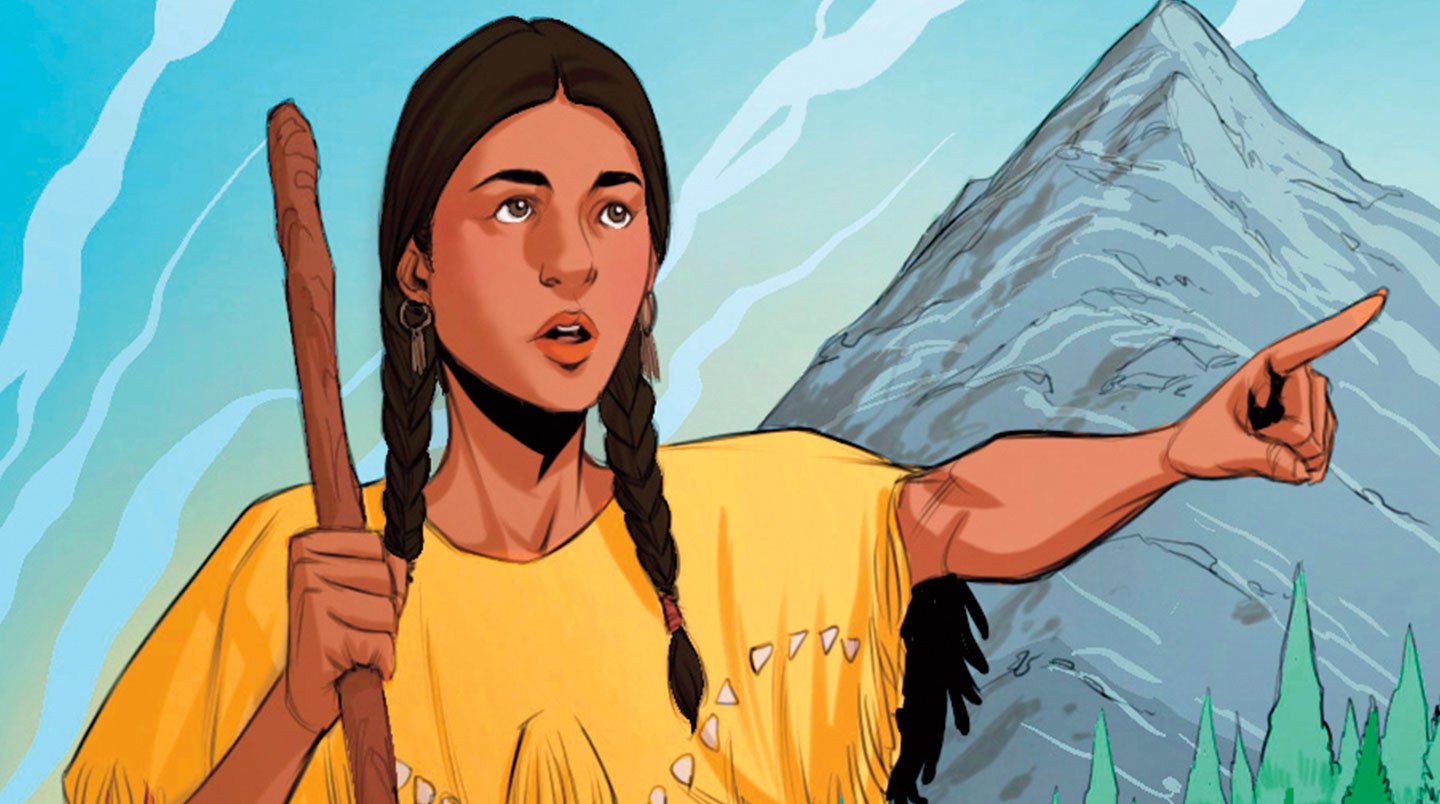At the time, there were no cars, paved roads, or complete maps. The team traveled on foot or by boat. Each day was a challenge.
Sacajawea wound up doing much more than interpreting. She knew which plants could fight hunger and illness. She also repaired clothing.
As the group entered the Rocky Mountains, Sacajawea helped guide them through the Shoshone’s land.
When the expedition neared her homeland, Sacajawea was surprised to meet her brother again. The two had a happy reunion. And he helped provide the explorers with horses so they could finish their journey.

